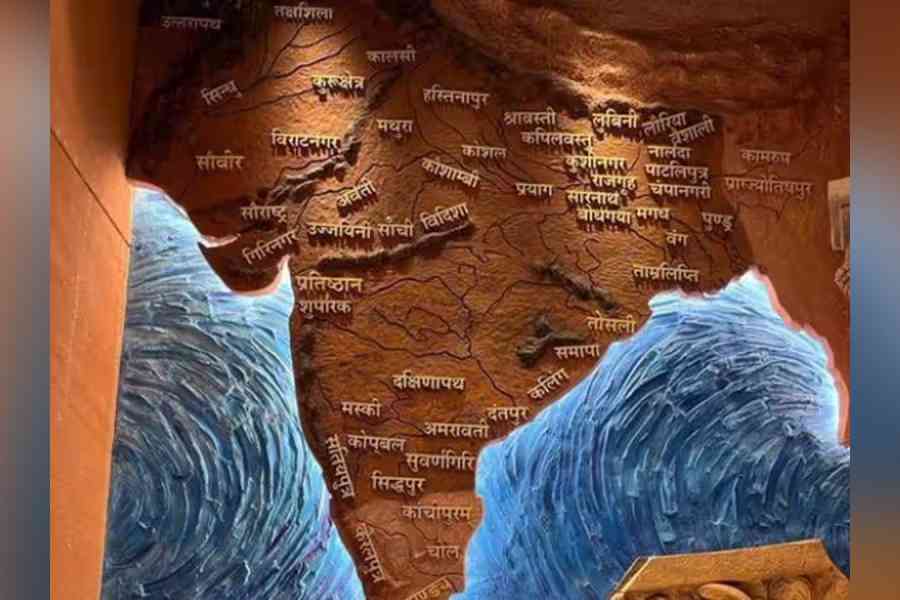Balendra Shah has accomplished what Amarendra Baahubali and Cyril Radcliffe could not: he has “acceded” much of Bihar, parts of Bengal, Uttarakhand and Himachal Pradesh, besides Sikkim, to “Greater Nepal”.
Balendra who?
Balendra Shah, the Kathmandu mayor who is an engineer as well as a rapper.
If Baahubali could move heaven and earth with a thrust of his sword and Radcliffe could partition India with a stroke of his pen, Balendra has redrawn the “Akhand” battlelines by putting up in his office a map of Greater Nepal that has bitten off quite a mouthful from Narendra Modi’s India.
It is tempting to read in the map a retort to the Modi government’s Akhand Bharat mural in the new Parliament building that depicts areas of Nepal as part of India.
But the jury is out on whether the mural is the real target or whether the map is a loud message to “Prachanda” — Nepal Prime Minister Pushpa Kamal Dahal’s nickname that does justice to larger-than-life characters like Baahubali.
But, on the mural, Prachanda has been taking what could be described as the middle path.
Balendra, the mayor with the map, has not been similarly discreet. Of all the places, the Independent politician chose Bangalore as the location from where he issued the directive to put up the Greater Nepal map in his chambers, according to a report in The Kathmandu Post.
Sources in Bangalore said Balendra was in the southern city earlier this week on a private visit.
The Kathmandu Post has quoted an aide to Balendra as stating: “We have to remember the proud history of Nepal. Mayor Shah thinks that it gives a positive vibe of nationalism.”
The map was unfurled a day after Prime Minister Prachanda informed Nepal’s National Assembly that he had raised the issue of the Akhand Bharat mural — which shows parts of Nepal, including Lumbini and Kapilavastu, as belonging to India — during his visit to New Delhi last week.
“We raised the issue of a new Indian map, which is placed in the Indian Parliament. We raised this issue on a serious note. But the Indian side responded that it was a cultural and historical map and not a political map.”
Last week, as the mural triggered debate and protests in Nepal and Pakistan, India stepped in to contain the damage by stating that “the mural in question depicts the spread of the Ashokan Empire and the idea of responsible and people-oriented governance that he adopted and propagated”. External affairs ministry spokesman Arindam Bagchi added that this is what the plaque in front of the mural says.
The reason the controversy is not dying down even a week after this explanation is a tweet by parliamentary affairs minister Pralhad Joshi in Kannada, which translates into: “The resolve is clear: Akhand Bharat.”
The tweet, accompanied by a photograph of the mural, was posted on the day of the inauguration of the new Parliament building.
Joshi’s tweet does not leave much scope for doubt and the government cannot blame anyone else for calling the map of the Ashokan Empire “Akhand Bharat”. The fact that the minister’s tweet has not been deleted in the face of controversies erupting in India’s immediate neighbourhood is being interpreted as a threat to the sovereignty of neighbouring countries, given that Akhand Bharat is a long-cherished Hindutva ideal.
This week, Bangladesh sought an explanation for the mural.
The idea of Greater Nepal is equally irredentist, aimed at getting back territories that Nepal lost following the Sugauli Treaty with the East India Company in 1816.











